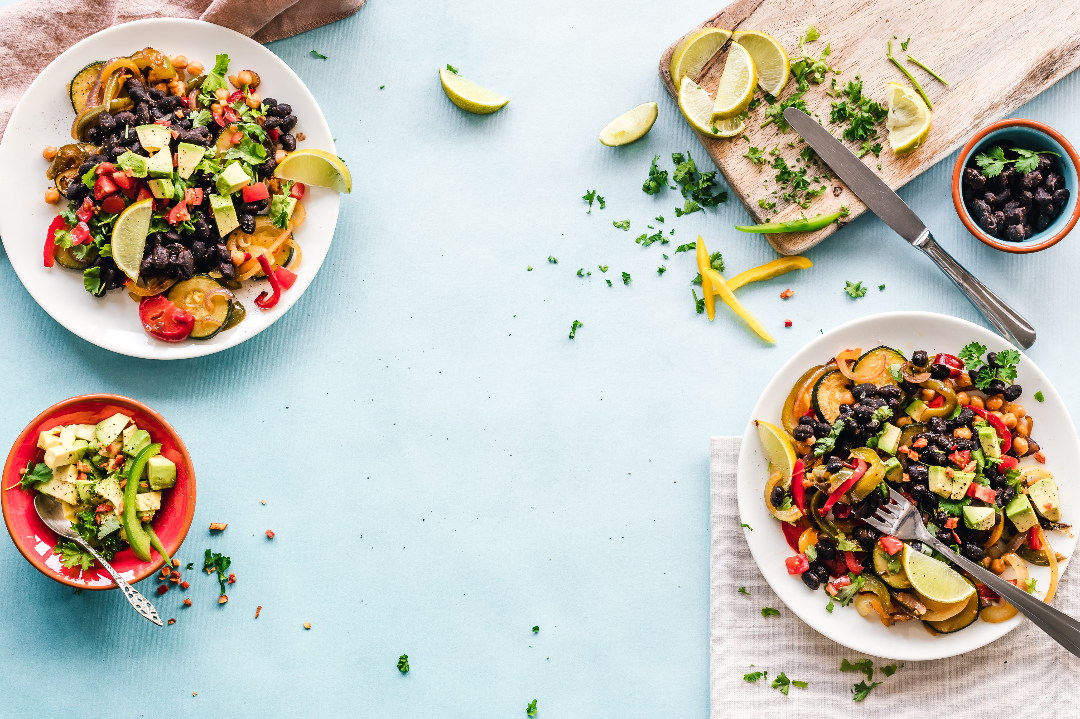
Managing a chronic health condition such as Coeliac Disease can be challenging at the best of times.
But when you’re trying to get optimal nutrition while at the same time excluding foods generally recommended for daily fibre intake, what are you supposed to do? We have some handy tips to ensure that gluten is out and plenty of gut-supporting prebiotic fibre is in – so you can maintain gut health on a gluten free diet!
What is gluten?
Gluten is the term for a combination of proteins found in wheat, barley, rye and oats. While many can tolerate it, people with coeliac disease, non-coeliac gluten sensitivity (NCGS), and irritable bowel syndrome (IBS) tend to avoid it.
For those with Coeliac Disease, exposure to gluten can be quite serious, triggering an abnormal immune reaction that can damage the lining of the gastrointestinal tract1. Removal of gluten from the diet is therefore medically necessary to prevent damage and help heal the intestinal wall.
However, removing gluten often results in the removal of many grain and cereal foods and this can have a negative impact on gut health due to reduced fibre intake.
Why is fibre so important for gut health?
We know fibre is important for keeping you regular, but a specific category of fibres called prebiotic fibres, are especially important to the gut microbiome2. Prebiotics are compounds found in a variety of foods including wholegrains, vegetables, fruit, nuts, seeds and legumes that can stimulate the growth of beneficial bacteria in the gut. Most of these foods contain a combination of different prebiotic fibre types. The main types of prebiotic fibres and some common dietary sources include:
- Fructooligosaccharides (FOS): brussels sprouts, beetroots, asparagus, garlic/leeks/onion, red kidney and butter beans, watermelons, mulberries, nectarines, rye*, wholemeal bread*, bran-based cereal*
- Inulin: asparagus, jerusalem artichokes, onions/leeks/shallots, garlic, slightly green bananas, barley*, bran*
- Galactooligosaccharides (GOS): beans (black, butter, haricot, mung, pinto, lima, soy), lentils, chickpeas, split peas, spelt*, mixed grain/wholemeal breads and cereal products*
- Pectin: in a large variety of fruit – apples, apricots, blackberries, kiwifruit, pears, strawberries, raspberries, oranges, plums and some vegetables – tomatoes, cabbage, carrots, eggplant, lemons, zucchinis, beetroot
- Arabinoxylan: bamboo shoots, flaxseeds, oats*, rice, mixed grain/wholemeal breads and cereal products*
- Proanthocyanidins: cinnamon, cranberries, peanuts, pecans, dark chocolate (80%)
- Resistant Starch: barley*, whole grain/wholemeal/rye bread*, lentils, chickpeas, red kidney beans, brown rice, oats*, cooked and cooled rice/potato, cooked and cooled pasta*
*= not suitable for someone with Coeliac Disease and/or would need to be swapped for a gluten free alternative.
Evidence suggests that a diverse microbiome, fuelled by a variety of prebiotic fibres, is linked to better health3,4. To achieve a diverse microbiome, we need to eat broadly from a variety of plant-based food sources. Fibre-fuelled bacteria produce beneficial by-products called short chain fatty acids (SCFAs) such as butyrate, propionate and acetate5,6. SCFAs help support gut health by nourishing our intestinal cells, reducing intestinal inflammation and maintaining gut barrier integrity7,8.

Do you want to know the proportion of fibre-fuelled bacteria that are in your microbiome? Discover how.
What effect does gluten free eating have on the microbiome?
Avoiding gluten can lead to lower fibre intake and reduced prebiotic variety due to reduced consumption of wheat, barley, rye and oats. Research has shown that a low gluten diet alters the gut microbiome, reducing levels of Bifidobacterium species and beneficial SCFA-producing species – specifically butyrate producers 9. Furthermore, gluten free diets have been linked to an increased risk of nutritional deficiencies for Vitamin D, B12, folate and iron10.
Swapping to high fibre and nutrient-rich gluten free alternatives can offer an opportunity to bump up fibre variety and make sure you keep your beneficial gut bacteria happy.
Getting fibre in when gluten is out!
Luckily there are plenty of gluten free grain options for those who need to avoid gluten. If you are Coeliac or have a gluten intolerance, try substituting the following grain options:
- Rice: aim for brown rice and increase resistant starch by first cooking and cooling your rice to have in rice salads or with leftovers.
- Quinoa: use as a rice substitute in stews, curries and stir-fries, or toss into salads. It can also be used in baking breads and muffins.
- Buckwheat flour and groats: use the flour in pancakes, muffins, soba noodles and bread; raw groats add texture to muesli, biscuits, crackers and bread; sprouted or cooked groats can be added to salads or stews.
- Sorghum flour: a versatile wheat flour substitute for both savoury and sweet baking; may need to add xanthan gum for thickening and stabilising the mixture.
- Legumes and legume flour: cooked legumes can be used as a meat substitute in curries, stews, spaghetti bolognaise, legume patties or added to salads. Legume flour can be used in the baking of both sweet and savoury items.
- Green banana flour: add to smoothies or use in both savoury and sweet baking.
How do you know if you’re getting enough fibre?
Microba Insight™ will provide you with a comprehensive overview of how your gut microbiome is functioning – indicating whether or not your diet includes enough prebiotic fibre. You will also obtain a personalised shopping list of high-fibre whole foods with the option to remove wheat, gluten or fructan items. Thus, helping you to fuel a healthy microbiome while directing you to appropriate gluten free, prebiotic fibre alternatives.
Find out your personal shopping list of high fibre, gluten free foods with Microba Insight™.
This microbiome test is not intended to be used to diagnose or treat medical conditions. A full disclaimer is available here
References
Coeliac Australia.
The Gluten Free Diet.
Coeliac Australia
Slavin, J. 2013.
Fiber and Prebiotics: Mechanisms and Health Benefits.
Nutrients, 5(4), 1417–1435
Valdes, A.M., Walter, J., Segal, E., & Spector, T.D.
Role of the gut microbiota in nutrition and health.
BMJ, 361, k2179 (2018)
Sommer, F., Anderson, J.M., Bharti, R., et al..
The resilience of the intestinal microbiota influences health and disease.
Nature Reviews Microbiology, 15(10), 630–638 (2017)
Koh, A., De Vadder, F., Kovatcheva-Datchary, P. and Bäckhed, F. .
From Dietary Fiber to Host Physiology: Short-Chain Fatty Acids as Key Bacterial Metabolites. .
Cell, 165(6), 1332–1345 (2016)
Bourassa, M.W., Alim, I., Bultman, S.J., and Ratan, R.R. .
Butyrate, neuroepigenetics and the gut microbiome: Can a high fiber diet improve brain health? .
Neuroscience Letters, 625, 56–63 (2016)
den Besten, G., van Eunen, K., Groen, A.K., et al..
The role of short-chain fatty acids in the interplay between diet, gut microbiota, and host energy metabolism. .
Journal of Lipid Research, 54(9), 2325–2340 (2013)
Cushing, K.M., Alvarado, D.A., and Ciorba, M .
Butyrate and Mucosal Inflammation: New Scientific Evidence Supports Clinical Observation. .
Clinical and Translational Gastroenterology, 6(8), e108–e108 (2015)
Hansen, L.B.S, Roager, H.M., Søndertoft, N.B., et al.,.
A low-gluten diet induces changes in the intestinal microbiome of healthy Danish adults. .
Nature Communications, 9(1), 4630–4630 (2018)
Thimmaiah G Theethira, Melinda Dennis & Daniel A Leffler .
Nutritional consequences of celiac disease and the gluten-free diet,.
Expert Review of Gastroenterology & Hepatology, 8:2, 123-129 (2014).. Doi: DOI: 10.1586/17474124.2014.876360


